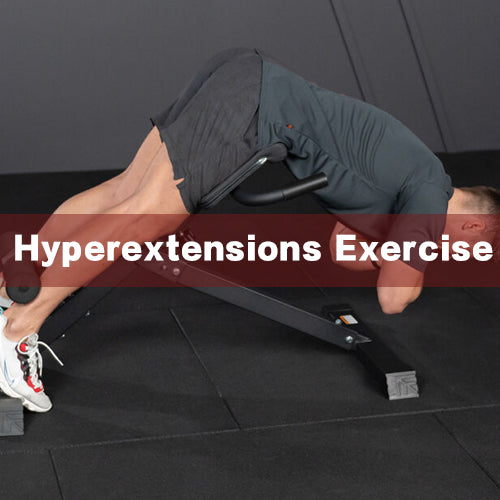If you’re aiming to build serious upper body strength and power, the military press is a must-have exercise in your workout arsenal. This compound movement targets multiple muscle groups and is a staple in strength training routines.
Table of content
The History: From Battlefield to Gym Floor
The military press, also known as the overhead press or simply "the press," has a storied history that stretches back to the early days of physical culture. Picture burly strongmen in the late 19th and early 20th centuries, hoisting heavy barbells overhead to demonstrate their strength and prowess.

The term "military" press likely originated from the strict form required - standing at attention with a rigid body, much like a soldier. This exercise was once a cornerstone of Olympic weightlifting, featuring as one of the three lifts in competition until 1972 when it was removed due to judging difficulties.
Despite its removal from Olympic competition, the military press has remained a staple in strength training programs worldwide. From bodybuilders sculpting impressive delts to powerlifters building raw strength, the military press continues to reign supreme in the world of overhead lifting.
Why is it important?
Shoulder strength: The military press is a key exercise for building overall shoulder strength and development.
Functional strength: It translates to improved performance in everyday activities and other sports.
Core engagement: It requires core stability to maintain proper form and prevent injuries.
Full-body exercise: While primarily a shoulder exercise, it engages multiple muscle groups.
Military Press Muscles Worked
To truly appreciate the military press, we need to understand the muscular symphony it conducts. Imagine your upper body as a complex machine, with the military press engaging multiple muscle groups in a coordinated effort:

1.Deltoids (Shoulders)
- Anterior deltoids: The front part of your shoulder muscles, primary movers in the press.
- Lateral deltoids: The side shoulder muscles, assisting in the movement.
- Posterior deltoids: The rear shoulder muscles, providing stability.
2.Triceps
These muscles at the back of your upper arms extend your elbows, crucial in the lockout phase of the press.
3.Upper Chest
The upper portion of your pectoralis major assists in the early phase of the lift.
4.Trapezius and Upper Back
These muscles work to stabilize your shoulder blades throughout the movement.
5.Core Muscles
Your abdominals and lower back muscles engage to keep your body stable and prevent arching.
6.Serratus Anterior
This often-overlooked muscle helps to protract and elevate the shoulder blades.
How to Do Military Press
To maximize the benefits and minimize the risk of injury, it’s crucial to perform the military press with proper form. Here’s a step-by-step guide:
Standing Military Press
Starting Position: Stand with your feet shoulder-width apart. Hold a barbell at shoulder height with an overhand grip, hands slightly wider than shoulder-width apart. Engage your core and keep your chest up.
Lift-Off: Lift the barbell off the rack (if using one) or clean it to your shoulders.
Pressing Phase: Press the barbell overhead by extending your elbows. Ensure the bar follows a straight path and moves in line with your ears.
Lockout: Fully extend your arms overhead without locking your elbows. Your biceps should be close to your ears.
Lowering Phase: Lower the barbell back to shoulder height with control, maintaining a steady and controlled motion.
Repeat: Perform the desired number of repetitions, maintaining proper form throughout.
Seated Military Press
Starting Position: Sit on a bench with back support. Hold a barbell at shoulder height with an overhand grip, hands slightly wider than shoulder-width apart.
Pressing Phase: Press the barbell overhead by extending your elbows. Keep your back flat against the bench.
Lockout: Fully extend your arms overhead without locking your elbows. Your biceps should be close to your ears.
Lowering Phase: Lower the barbell back to shoulder height with control.
Repeat: Perform the desired number of repetitions, maintaining proper form throughout.
Common Mistakes and How to Avoid Them
To get the most out of your military press and avoid injury, steer clear of these common mistakes:
Arching the Lower Back: Overarching your lower back can lead to back strain. Engage your core and keep your spine neutral.
Flaring Elbows: Allowing your elbows to flare out to the sides reduces the effectiveness of the exercise and increases shoulder strain. Keep your elbows slightly forward.
Using Momentum: Swinging the barbell or using your legs to push the weight up diminishes muscle engagement. Perform the exercise with controlled movements.
Incorrect Grip: A too wide or narrow grip can strain your wrists and shoulders. Maintain a shoulder-width grip.
Incomplete Range of Motion: Not fully extending your arms at the top of the movement reduces the exercise’s effectiveness. Ensure a full range of motion without locking your elbows.
Variations of the Military Press
Dumbbell Military Press

Using dumbbells instead of a barbell allows for a greater range of motion and helps address muscle imbalances.
Behind-the-Neck Press

A more advanced variation where the barbell is pressed from behind the neck. This variation requires excellent shoulder mobility and should be performed with caution to avoid injury.
Push Press

This variation allows for a slight knee bend and leg drive, enabling you to handle heavier weights and develop explosive power.
Arnold Press

Named after Arnold Schwarzenegger, this dumbbell variation involves rotating the palms from facing your body to facing forward as you press, engaging the shoulders through multiple planes of motion.
Landmine Press

Using a barbell secured in a landmine attachment, this variation provides a unique pressing angle that can be easier on the shoulders for some individuals.
Programming the Military Press: Building Your Routine
Incorporating the military press into your workout routine requires thoughtful planning. Think of your workout program as a recipe, with the military press as a key ingredient that needs to be balanced with other exercises.
For Beginners: Start with 3 sets of 8-10 repetitions, performed twice a week. Focus on mastering proper form before increasing weight or volume.
For Intermediate Lifters: Aim for 4 sets of 6-8 repetitions, 2-3 times per week. Begin experimenting with different variations to keep challenging your muscles.
For Advanced Lifters: Push your limits with 5 sets of 3-5 repetitions for strength, or 4 sets of 8-12 for hypertrophy. Consider incorporating periodization to continually progress.
Remember, these are general guidelines. Listen to your body and adjust accordingly. It's better to perform fewer reps with perfect form than to sacrifice technique for higher numbers.
Military Press Vs Shoulder Press
Often used interchangeably, the military press and shoulder press are both excellent exercises for targeting the shoulders. However, there are subtle differences in their execution and impact.
Understanding the Terms
Military Press: Typically refers to a standing overhead press with a barbell, emphasizing strict form and core engagement.
Shoulder Press: A broader term encompassing various overhead presses, including those performed with dumbbells, barbells, or machines.
Key Differences
Equipment: Military press primarily uses a barbell, while shoulder presses can utilize dumbbells, barbells, or machines.
Stance: Military press often involves a narrower stance for stability, while shoulder presses can be performed with a wider stance.
Core Engagement: Military press heavily engages the core for balance, while machine-based shoulder presses reduce core involvement.
Muscle Emphasis: Both target the deltoids, but the military press tends to place more emphasis on overall shoulder strength and stability.
Which One Should You Choose?
The best choice depends on your fitness goals, equipment availability, and personal preference.
Military Press: Ideal for building overall shoulder strength, core stability, and explosive power.
Dumbbell Shoulder Press: Offers greater range of motion and can help correct muscle imbalances.
Machine Shoulder Press: Provides a more isolated exercise, suitable for beginners or those with shoulder injuries.
FAQs
How often should I do the military press?
Incorporate the military press into your routine 1-2 times a week, allowing for adequate recovery between sessions.
Can beginners do the military press?
Yes, beginners can perform the military press with lighter weights and proper form. Start with a manageable weight and gradually increase as you build strength.
Should I use a barbell or dumbbells for the military press?
Both barbells and dumbbells are effective. Barbells allow for heavier weights, while dumbbells provide a greater range of motion and help address muscle imbalances.
Is the behind-the-neck press safe?
The behind-the-neck press can be risky due to the potential strain on the shoulders and neck. It should only be performed by those with excellent shoulder mobility and should be done with caution.
How can I improve my military press strength?
Focus on progressive overload, proper form, and complementary exercises that strengthen your shoulders, triceps, and upper chest.
The Bottom Line
Highly effective military press is a full body exercise used to tone up muscles and increase power of the upper part of the body. Allowing this compound movement to be part of your routine would give you more power in shoulders, triceps, upper chest as well as making it useful for overall functional fitness. Proper form, progressive overload and adequate rest days are important if you want to achieve your best result. If your fitness aim is achievable with the help of the military press then anyone can enter into that program regardless of whether they are starters or pros. Enjoy lifting!


